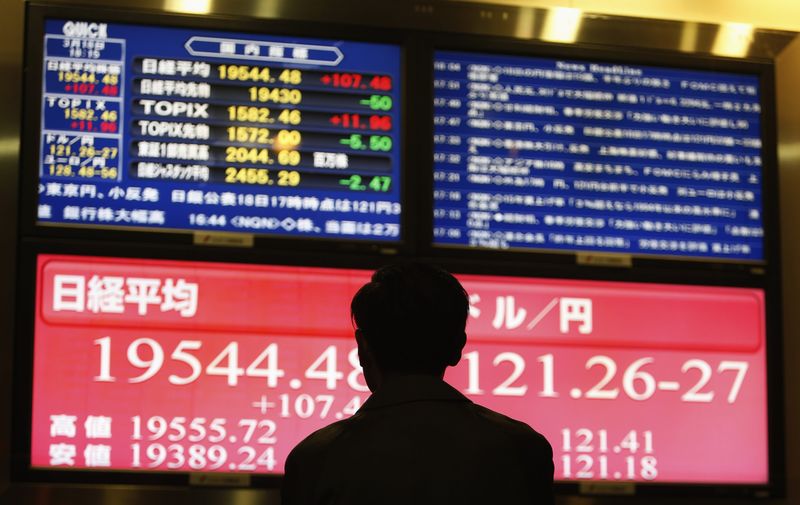This post was originally published on this site
https://i-invdn-com.akamaized.net/news/LYNXMPEB310J3_M.jpg © Reuters.
© Reuters.By Alex Ho
Investing.com – Asian markets continued their rollercoaster ride on Monday morning in the aftermath of a big rally in U.S. markets Friday while digesting data from China that showed huge falls on industrial production, retail sales and investment.
Wall Street rallied strongly on Friday, with the closing up by 9.36%, the gained 9.29% and the 9.35%. But the rally did not carry over to Asia on Monday morning.
In China, investors had to digest the news that combined data for January and February showed , and all fell more than analysts expected after the coronavirus-linked lockdowns. Industrial operations fell 13.5%, far more than the 3% decline generally expected and the first decline on record.
Retail sales also posted the first decline on record by falling 20.5% while fixed asset investment fell 24.5%, far more than predictions of a 2% fall.
Asian markets seemed poised for another day of losses, although the losses appeared to be most subdued in China.
China’s was down 0.62% and the was down by 0.98% by 10:38 PM ET (2:02 AM GMT). Hong Kong’s lost 2.36%.
Australia’s led the loses as it tumbled 7.66%.
Markets in Korea and Japan, which both also saw circuit breakers triggered after trading commenced on Friday saw downward movement after starting flat with Japan’s down 0.79% and South Korea’s is down by 0.75%.
Wall Street rebounded on Friday from a sellout on Thursday that was the worst since the 1987 Black Monday. The rebound followed the move by U.S. President Donald Trump to declare a state of emergency and release some US$50 billion to fight COVID-19.
On Sunday, the U.S. Federal Reserve moved to cut interest rates to between 0%-0.25%, the third cut this month. Rates have not been this low since 2015. The Fed also announced plans to boost its bond holdings in a $700 billion quantitative easing program in addition to a $1.5 trillion injection announced on Friday.
Fed Chairman Jerome Powell told a press conference announcing the moves that there is “more risk to financial stability” when markets “are trying to understand what’s going on, they’re trying to reach a view in high uncertainty, and that’s why you see lots and lots of volatility.”
Peter Boockvar, chief investment officer at Bleakley Advisory Group told CNBC: “The Fed blasted its monetary bazooka for sure. This better work because I don’t know what they have left and no amount of money raining from the sky will cure this virus. Only time and medicine will.”
The latest World Health Organization statistics on COVID-19 show 153,648 cases and 5,476 deaths globally as of March 15.
Fusion Media or anyone involved with Fusion Media will not accept any liability for loss or damage as a result of reliance on the information including data, quotes, charts and buy/sell signals contained within this website. Please be fully informed regarding the risks and costs associated with trading the financial markets, it is one of the riskiest investment forms possible.

